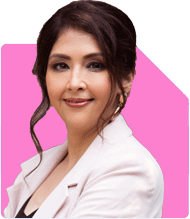Ramalingam Kalirajan |10902 Answers |Ask -Follow
Mutual Funds, Financial Planning Expert - Answered on Jun 18, 2024
He has an MBA in finance from the University of Madras and is a certified financial planner.
He is the director and chief financial planner at Holistic Investment, a Chennai-based firm that offers financial planning and wealth management advice.... more

I want to invest 50k. My financial targets more than one lakh(one year) which diversification i need to follow to get better returns low risk. sip or mutual funds or direct shares(equity)? Can any one suggestion me detailed. Thank You in Advance. Without lock in period ? it possible ?
Understanding Your Financial Goals
You have set a financial target of more than Rs 1,00,000 within one year. This ambitious goal implies a need for significant growth, which often comes with higher risk. However, your preference for low risk indicates a need for balanced and diversified investments. Understanding the risk-return trade-off is crucial before proceeding.
Importance of Diversification
Diversification is spreading investments across various asset classes to reduce risk. It ensures that the poor performance of one investment doesn't significantly impact your overall portfolio. By diversifying, you can achieve a balance between risk and return.
Evaluating Investment Options
There are several investment options to consider, each with its benefits and risks. Let’s evaluate the suitability of Systematic Investment Plans (SIPs), mutual funds, and direct equity shares for your goals.
Systematic Investment Plans (SIPs)
SIPs allow you to invest a fixed amount regularly in mutual funds. This method promotes disciplined investing and can help in averaging out the cost of investments over time. SIPs are suitable for long-term wealth creation and can mitigate market volatility through rupee cost averaging. For a one-year horizon, however, SIPs may not fully leverage their potential benefits, as they are typically recommended for longer-term goals.
Mutual Funds
Mutual funds pool money from various investors to invest in diversified portfolios of stocks, bonds, or other securities. Actively managed mutual funds, guided by professional fund managers, can potentially offer higher returns compared to passive index funds, especially in a volatile market. For your one-year goal, consider liquid funds or short-term debt funds which are relatively low risk and can provide better returns compared to traditional savings accounts.
Direct Equity Shares
Investing directly in equity shares can offer high returns but comes with significant risk and requires market knowledge. It involves selecting and managing individual stocks, which can be time-consuming and stressful, especially with a short-term goal. Direct equity investment is suitable for those who have the expertise and can tolerate higher risk.
Benefits of Actively Managed Funds Over Index Funds
Actively managed funds aim to outperform the market index through strategic stock selection and portfolio management. Fund managers actively adjust the portfolio to seize market opportunities and mitigate risks. Index funds, on the other hand, simply replicate the market index and cannot adapt to market changes swiftly. Hence, actively managed funds have the potential to offer better returns, which is crucial for your high return target within a year.
Disadvantages of Direct Funds
Direct mutual funds have lower expense ratios since they bypass intermediaries. However, they require a higher level of financial literacy and time commitment. Managing direct funds without professional guidance might lead to suboptimal decisions and missed opportunities. Investing through a Certified Financial Planner (CFP) ensures professional management, regular monitoring, and alignment with your financial goals.
Recommendations for a Balanced Portfolio
Considering your short-term goal and low-risk preference, a balanced portfolio could include the following components:
1. Debt Mutual Funds
Debt mutual funds invest in fixed income instruments like bonds and treasury bills. They are less volatile than equity funds and provide steady returns. Short-term debt funds or liquid funds are ideal for your one-year investment horizon. They offer higher returns than traditional savings accounts with relatively low risk.
2. Balanced or Hybrid Funds
Balanced or hybrid funds invest in a mix of equity and debt instruments. They provide the growth potential of equities and the stability of debt. These funds are managed to balance risk and return, making them suitable for investors seeking moderate risk with decent returns.
3. Equity Mutual Funds
Equity mutual funds invest in a diversified portfolio of stocks. For a one-year investment horizon, opt for large-cap or blue-chip equity funds. These funds invest in well-established companies with stable growth prospects. While they are riskier than debt funds, they offer higher return potential, aligning with your goal of doubling your investment.
Setting Realistic Expectations
While aiming to double your investment in one year is ambitious, it’s essential to set realistic expectations. High returns often come with high risk. Diversification helps in balancing this risk, but the market's inherent volatility means there are no guarantees. Focus on achieving the best possible returns within your risk tolerance rather than fixating on a specific target.
Professional Guidance and Regular Monitoring
Investing through a Certified Financial Planner (CFP) provides several advantages:
Personalized Advice: A CFP tailors investment strategies to your specific goals, risk tolerance, and time horizon.
Professional Management: They offer expert management of your portfolio, ensuring optimal asset allocation and timely adjustments.
Regular Monitoring: Continuous monitoring and rebalancing of your portfolio help in managing risks and seizing opportunities.
Liquid Investments for Flexibility
Since you prefer investments without a lock-in period, opt for liquid investments. Liquid mutual funds are a great choice, as they offer high liquidity and can be redeemed quickly. These funds invest in short-term money market instruments and provide better returns than savings accounts.
Emergency Fund Consideration
Ensure that your emergency fund is intact before making additional investments. An emergency fund covering at least six months of expenses provides financial security during unforeseen circumstances. It allows you to invest without the need to liquidate investments prematurely.
Tax Efficiency
Consider the tax implications of your investments. Short-term capital gains (STCG) on equity investments held for less than one year are taxed at 15%. Debt fund returns are taxed based on your income tax slab if held for less than three years. A CFP can help you optimize your investments for tax efficiency.
Risk Management
While aiming for high returns, it’s crucial to manage risk effectively. Diversification, professional guidance, and regular monitoring are key strategies. Avoid putting all your money into high-risk investments. Maintain a balanced approach to safeguard your principal amount.
Importance of Consistent Investing
Consistent and disciplined investing is vital for wealth creation. Whether you opt for a lump-sum investment or a systematic investment plan (SIP), staying committed to your investment strategy is crucial. Regular investments help in averaging out costs and mitigating market volatility.
Financial Discipline
Financial discipline goes beyond investing. It includes budgeting, managing expenses, and avoiding unnecessary debt. Maintaining financial discipline ensures that your investments are aligned with your long-term financial goals.
Exploring Other Investment Avenues
Apart from mutual funds and direct equity, consider other investment avenues like fixed deposits (FDs) and recurring deposits (RDs) for diversification. While these may offer lower returns, they provide safety and stability, balancing the higher-risk components of your portfolio.
Final Insights
Your goal of doubling your investment in one year is ambitious but achievable with a balanced approach. Diversify your portfolio with a mix of debt mutual funds, balanced or hybrid funds, and equity mutual funds. Avoid direct shares unless you have the expertise and risk tolerance. Invest through a Certified Financial Planner (CFP) for personalized advice and professional management. Focus on liquid investments for flexibility and maintain financial discipline. Regular monitoring and rebalancing of your portfolio are essential. Set realistic expectations and prioritize risk management. By following these strategies, you can optimize your chances of achieving your financial target within your desired timeframe.
Best Regards,
K. Ramalingam, MBA, CFP,
Chief Financial Planner,
www.holisticinvestment.in
You may like to see similar questions and answers below
Ramalingam Kalirajan |10902 Answers |Ask -Follow
Mutual Funds, Financial Planning Expert - Answered on Jun 18, 2024
Ramalingam Kalirajan |10902 Answers |Ask -Follow
Mutual Funds, Financial Planning Expert - Answered on Jun 25, 2024
Ramalingam Kalirajan |10902 Answers |Ask -Follow
Mutual Funds, Financial Planning Expert - Answered on Aug 22, 2024
Ramalingam Kalirajan |10902 Answers |Ask -Follow
Mutual Funds, Financial Planning Expert - Answered on Jun 25, 2024
Ramalingam Kalirajan |10902 Answers |Ask -Follow
Mutual Funds, Financial Planning Expert - Answered on Aug 22, 2024
Samraat Jadhav |2514 Answers |Ask -Follow
Stock Market Expert - Answered on Dec 18, 2025
Reetika Sharma |432 Answers |Ask -Follow
Financial Planner, MF and Insurance Expert - Answered on Dec 18, 2025
Reetika Sharma |432 Answers |Ask -Follow
Financial Planner, MF and Insurance Expert - Answered on Dec 18, 2025
Reetika Sharma |432 Answers |Ask -Follow
Financial Planner, MF and Insurance Expert - Answered on Dec 18, 2025
Samraat Jadhav |2514 Answers |Ask -Follow
Stock Market Expert - Answered on Dec 18, 2025

Kanchan Rai |648 Answers |Ask -Follow
Relationships Expert, Mind Coach - Answered on Dec 18, 2025
Kanchan Rai |648 Answers |Ask -Follow
Relationships Expert, Mind Coach - Answered on Dec 18, 2025
Anu Krishna |1754 Answers |Ask -Follow
Relationships Expert, Mind Coach - Answered on Dec 18, 2025
Anu Krishna |1754 Answers |Ask -Follow
Relationships Expert, Mind Coach - Answered on Dec 18, 2025
Anu Krishna |1754 Answers |Ask -Follow
Relationships Expert, Mind Coach - Answered on Dec 18, 2025
























